IRAN-CONTRA: STILL A MYSTERY. Part 6: The world into which Jimmy Carter became president
An MOR series
If you didn’t read Part 5 yet, you may do so here:The mainstream hypothesis about Iran-Contra has a ‘mistakes-were-made’ structure. It says that Jimmy Carter and Ronald Reagan empowered and armed Ayatollah Ruhollah Khomeini, the Iranian genocidal terrorist, for innocent reasons (though not the same ones!). MOR’s competing Machiavellian hypothesis says no: the US bosses wanted World Jihad (see Part 5). The mainstream hypothesis cannot explain Reagan (see Part 2). Can it at least explain Carter? We’ll see. But before we examine Carter’s performance, we must first understand the relevant context into which Jimmy Carter became president. And that is what I will present here.
…the Persian feels the unseen hand … [Mohammed] Mossadegh rose to power on a wave of anti-British feeling, yet many—and perhaps even he—believed that he was a British tool. In the last years of the Shah’s reign and today, it is the American who is that unseen hand, and I don’t think it would be hard to find a Persian today who could explain Khomeini in terms of his being a tool of American policy.1
According to the mainstream ‘innocence’ hypothesis about Iran-Contra, Carter and Reagan were political opposites, yet both of them good guys. As such, they were motivated by entirely different but equally innocent and worthy goals. It was therefore just horrible bad luck—a terrible coincidence—that Carter’s and Reagan’s mistakes, in immediate sequence, were perfectly articulated to help the genocidal terrorist, Ayatollah Ruhollah Khomeini, launch World Jihad from Iran (see Part 5).
According to this mainstream story, Carter removed the Shah of Iran and installed Khomeini because he was supposedly trying to protect Iranians from human-rights abuses at the hands of their monarch, the Shah Reza Pahlavi. And then Reagan sent Khomeini billions in secret weapons in order supposedly to beg for the freedom of a few Hezbollah-held hostages in Lebanon (see Part 1).
The mainstream claims concerning Reagan were long ago shown to be 100% of a lie—and on the front page of the New York Times! (see Part 2). Yet, today, they are accepted everywhere in media and academia (see Part 3). Chillingly, that may have something to do with an “Orwellian” CIA system—discovered by the Iran-Contra congressional investigators—created to corrupt all of media and academia (see Part 4).
But what about Jimmy Carter? Can the mainstream ‘innocence’ hypothesis at least explain his behaviors? Let us first state clearly the mainstream hypothesis and its challenger.
The mainstream ‘innocence’ hypothesis. Carter did a bad thing, namely, remove the Shah and install Khomeini, launcher of World Jihad. Carter, however, was a good guy, and he meant well—he never wanted World Jihad. He tried to do the right thing, because Iranians were being abused, but he was too soft and timid, out of his depth, really, in the geopolitical game. ‘A peanut farmer from Georgia.’ And … well, he got duped by clever bad-guy Khomeini.
The alternative—Machiavellian—hypothesis. Carter was not a ‘peanut farmer from Georgia’ (that was just his ‘I am a regular guy’ campaign propaganda). He was a wealthy agricultural businessman. And he was not an ‘outsider’ but a State governor, which is to say a top politician in the United States. No country bumpkin, he. The claim here is that Carter knew exactly what he was doing. His top bosses (same people as Reagan’s top bosses) wanted Khomeini’s World Jihad, so Carter removed the Shah and empowered Khomeini, teeing the ball for Reagan to kick. But why all that? Because the bosses are totalitarian psychopaths and jihad is their tool to destroy what is left of our Western democratic order (see Part 5).
In my next piece, we’ll review the evidence of Carter’s behaviors to see which hypothesis can best be fitted to the facts. But context, as the Wise Man said, is everything. So we’ll first get a sense, here below, for the historical context into which Jimmy Carter became president.
Since Carter’s and Reagan’s policies in Iran have roots in what the CIA had done to Iran in the early 1950s, and since the Rockefellers were heavily involved in all that, allow me first, very briefly, to summarize some key events of the early 20th century that led to the creation of the CIA…
The Rockefellers, the Nazis, and the CIA
Before World War II, the Rockefellers had been the bosses of the industrial US bosses, and chief oppressors of ordinary US workers, bringing over gunmen to shoot at their own employees if they dared complain of their industrial slavery. These behaviors of the Rockefellers, we have argued, were frankly psychopathic.
After the Ludlow Massacre of 1914, when Rockefeller gunmen murdered even the wives and children of striking workers in Rockefeller’s Colorado coal mines, the business of shooting at their employees became too scandalous, and the Rockefellers decided to invest in a more subtle strategy. So they became the top leaders and financiers of the international eugenics movement, which pushed pseudoscience to claim that the poor should be stripped of their democratic and reproductive rights because they were supposedly ‘feebleminded’ (mentally retarded).
The international eugenics movement was one major aspect of a grand Rockefeller strategy to destroy democracy and enslave all Westerners. With Rockefeller support, eugenics became, in Germany, German Nazism.
Another major aspect of the Rockefeller strategy was a vast effort to corrupt the meaning-making institutions of media and academia. In tandem, they funded a research effort to learn how to use these clandestinely controlled institutions to manage the reality of Western citizens with psychological warfare. Their goal was “dictatorship by manipulation,” as one dissident researcher characterized it.
By 1938, the Rockefeller media/academic system was ready for a major test. That test was Orson Welles’ War of the Worlds broadcast on CBS.
In all this, the Rockefellers had been working closely with an incipient US Intelligence. Naturally, then, when WWII broke out, the Rockefeller psychological-warfare experts were hired by the US government—as were Nelson and David Rockefeller themselves—to run the US wartime intelligence and psychological warfare operations.
When the war ended, these Rockefeller psychological warriors were funneled into new departments of ‘communications’ that sprang up in elite universities thanks to dark CIA money laundered in part through the Rockefeller Foundation. Since then, these university ‘communications’ departments have been training essentially everybody who works in the mainstream media.
The CIA—the United States Central Intelligence Agency—was itself another Rockefeller creation, an outgrowth of Rockefeller involvement with US Intelligence and psychological warfare before and during the war.
Formally established with the National Security Act of 1947, the CIA was given, by that very law, the power to do in secret basically anything that the spooks (or, more precisely, their Rockefeller bosses) wanted, thus fatally undermining US democracy.
Now, to create the CIA, at least tens of thousands of ‘defeated’ Nazis were absorbed. Mind you, this was not the famous Operation Paperclip, which recruited 1,600 Nazi rocket scientists for NASA); this was, rather, a giant move to absorb (at least) tens of thousands of German Nazis and Nazi collaborators—war criminals all.
It was Nazi General Reinhard Gehlen, formerly head of Fremde Heere Ost, the eastern military intelligence division of the Nazi German Army, who collected his Nazi spies and put them back together to form the postwar Gehlen Organization for the CIA.
This was of course done in secret, and remained unknown until 1988, when historian Christopher Simpson obtained some of the relevant documents via the Freedom of Information Act (FOIA).
The Rockefellers, always the bosses of the bosses, were sitting atop the so-called postwar military-industrial complex, which should really be called the military-industrial-intelligence complex. This complex, by President Dwight D. Eisenhower’s own famous parting admission, fully owned President Eisenhower. To wit, the Dulles brothers, John Foster and Allen, both of them Rockefeller retainers, were in charge of US foreign policy in the Eisenhower administration, respectively heading the US State Department and the CIA. And Allen Dulles had himself overseen for the Rockefellers the absorption of all those Nazis—whom the Rockefellers had helped create in the first place—to the CIA.
In the context of the new Cold War, the powerful Rockefeller network was itching to flex its power and use their CIA Nazis to ruin democracy and create puppet dictatorships everywhere. In the year of 1953, Iran became their first target.
Why Iran? For one, because the antidemocratic Rockefellers obviously hated everything going on in Iran, where democracy was flourishing. And, for another, because intervening in Iran could give the Rockefellers a piece of Iran’s oil. And oil, as everybody knows, was the source of Rockefeller wealth and power.
Iran becomes the CIA’s target
The democratically elected Iranian government of Prime Minister Mohammad Mossadegh—very Western-oriented—wanted Iran to be a modern democratic country. He was interested in land reform, women’s rights, and the expansion of education. And he was brave enough to strengthen parliamentary democracy at the expense of the backward power of the Muslim Shia establishment in Iran, which put him at odds with the conservative clerics. Mossadegh wanted, moreover, to create a strong, independent Iran, free of foreign influences, so he kept an equal distance from the Western powers and the Soviets.
Mossadegh had grown suspicious that the Anglo-Iranian Oil Company (AIOC), run by the British government, was stealing a big chunk of the royalties owed to the Iranian government. So in 1951 he asked to see the books. Tellingly, the AIOC refused to be audited. Fine: later the same year, in a near-unanimous vote, the Iranian Parliament or Majlis nationalized the Iranian oil industry.
Holy. . . !
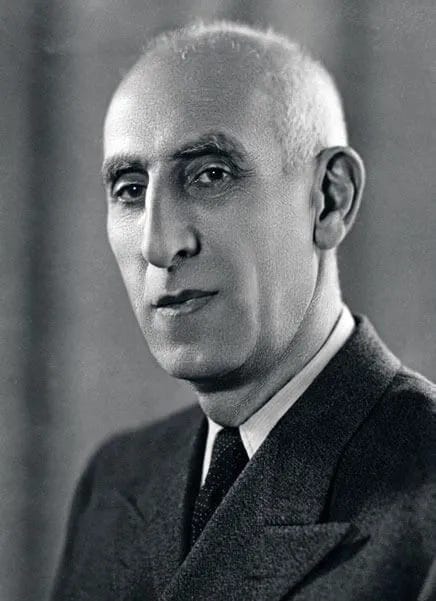
This ‘Abadan Crisis’ (named after the Abadan oil refinery, largest in the world at the time) made the British bosses… unhappy—let’s say it like that. For the AIOC had meant vital energy supplies, profits, and tax revenues for a British economy only six years out of World War II, plus geopolitical influence in Western Asia in the new Great Game of the Cold War.
Refusing to accept the nationalization, Britain blockaded Iranian oil exports and withdrew technicians and engineers, leading to a collapse in production. This crippled Iran’s economy. But Mossadegh did not back down. So, trading on the ‘special relationship’ with the United States, British bosses went begging: could the Americans help?
They could! In 1953, the Eisenhower (the Rockefeller) CIA pounced on Iran with Operation Ajax.
The Shah (King) Mohammed Reza Pahlavi was not exactly Mossadegh’s replacement, for the Shah was already in the Iranian government: he was the monarch. Mossadegh was prime minister. This had been a constitutional, parliamentary monarchy, but the Shah wanted autocratic power, so he allied with the coup. What Operation Ajax did was remove Mossadegh and confer autocratic powers on the Iranian monarch. Following which the Shah promptly allowed a new consortium of foreign companies—British, American, French, and Dutch—to resume control of Iran’s oil as Iranian Oil Paricipants Ltd., and to split the profits with him.
The Rockefeller family oil companies here acquired an important 16% interest in Iranian oil operations.2
The Shah
Say what you will about the Shah Mohammed Reza Pahlavi and the shameful manner in which he achieved autocracy; he was an interesting guy all the same, and not without some appealing virtues. In fact—and this would become a headache for the US bosses—he was (ironically) a lot like Mossadegh!
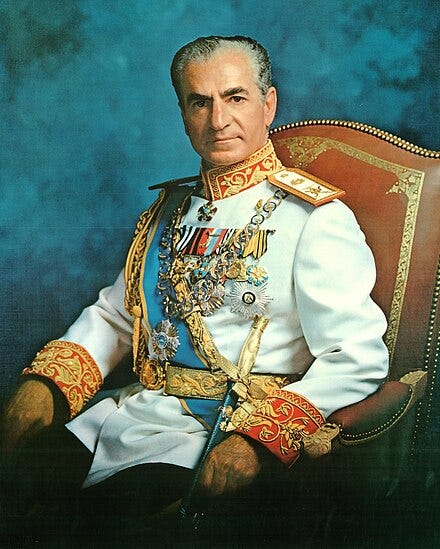
Pahlavi dared to imagine a better future for ordinary Iranians, and he felt responsible, as monarch, to make it happen. He wanted to modernize Iran and abolish slavery, an ambition that he shared with the ancient Achaemenid Persian emperors, protectors of the poor and of the ancient Jews (see Book of Ezra, Book of Nehemiah). The Achaemenids were benevolent autocrats, justly famous for their Zoroastrian ethics and for their alliance with Babylonian semitism, the ancient ethical system of southern Mesopotamia, about which we write here:
The Shah loudly compared himself to the ancient Achaemenid emperors in his official propaganda, in particular with Cyrus and Darius, and saw himself as their continuation.3
You get a sense for the Shah’s (quite literal) anti-slavery initiative from an oral history effort that interviewed US diplomatic personnel stationed at various moments of that era in Iran.4 These witnesses commented on the Shah’s drive 1) to redistribute land and give technical farming support to the homeless and the rural poor, who were basically serfs5; 2) to emancipate Iranian women; 3) to introduce public health; and 4) to extend modern public education across the board to all Iranians.6
In 1963, the Shah rolled out his most ambitious reform program yet and called it the White Revolution. Over 6 million Iranians voted in a referendum and the White Revolution was overwhelmingly supported. That’s a highly significant outcome since only men could vote and one of these reforms would extend the vote and the right to stand for office (!) to Iranian women. In addition, the program included a turbo-charged land reform to alleviate rural poverty, the privatization of State-owned industries, and profit-sharing for industrial workers.
With respect to the US bosses, the Shah was initially a docile nephew to his Uncle Sam, but… he did have a lot of personality, that Reza Pahlavi. Already by 1957, a State Department profile on his character was expressing some nervousness, remarking on the monarch’s “ ‘growing maturity,’ ” as he no longer needed “ ‘to seek advice at every turn.’ ”7 And the Shah was flirting a bit with the Soviet bosses to get some stuff from them.8 There was never any danger that he might turn pro-Soviet, but he did want some room to maneuver that would make him less completely dependent on the US bosses.
Oops.
What a headache for the Rockefellers! The Shah was quickly turning into another Mossadegh. Risky! Because the iron-fisted rule of US-dominated geopolitics is that “the US doesn’t have friends, only future enemies” (the phrase belongs to Jared Israel). By 1959, according to the British diplomat Sir Denis Wright, the Western bosses had decided that they couldn’t trust Reza Pahlavi to be the proper pet they wanted.9
An opening was thus created for the Shah’s nemesis.
The Shah’s nemesis: Khomeini
In the same year of 1963, when the Shah launched his White Revolution, the radical Muslim cleric Ayatollah Ruhollah Khomeini instigated widespread violence against it.
Why? Well, misogyny is central in the Islamic tradition, so all that stuff about emancipating women was politically offensive to a Shia mujtahid such as Khomeini. And the Swiss-educated Shah was undeniably un-Islamic—in fact, positively libertine, and entirely Western, which to Khomeini was obscene. All true. But scholars such as Barry Rubin and Manouchehr Ganji (a former minister in the Shah’s government) have observed something else. Something, perhaps, even more important.
The Muslim clerical establishment in Iran, “through their control of religious endowment land,” or waqf, were among the biggest landowners in Iran, with holdings second only to the Shah’s own. And those religious landholdings also forced farm laborers into serfdom, for they were managed under the same semi-feudal tenancy system as the private estates. The Shah’s proposed land reform, with its concomitant abolition of slavery, therefore severely affected the clerics or mujtahids, as it did other big slave-owning landowners.10
Obviously, the Shah was trying to break the system: shatter the power of the landed lords, whether Islamic clerics or secular landowners. But the landed lords resisted. What the enraged Islamic clerics brought to the aristocratic fight to preserve the semi-feudal backwardness and suffering of Iran was a dangerous tool of power: jihadi fanaticism. And to ignite that, of course, Khomeini incessantly alleged that the Shah’s un-Islamic reforms were instigated by the Jews.
Unfortunately for Iranians, both Khomeini and the Shah were willing to use violence. Khomeini wanted to provoke a violent government response, and the Shah rose to the bait.
After intimidating those clerics (initially the majority) who wished to avoid a violent confrontation, Khomeini instigated his followers to ‘martyrdom’ on the model of the famous Hossein ibn Ali, Muhammad’s grandson, considered by the Shia Muslims to have been the rightful heir to the title ‘caliph’ but killed by the Umayyad ‘usurpers’ at the dawn of Islam.11
In this manner, in his effort to derail the White Revolution, Khomeini fired up some fanatical crowds and provoked clashes with the Shah’s security forces. At the site of one such clash, the Feiziyeh, a historic and renowned Islamic seminary (madrasa) located in Qom, Khomeini then gave a sermon.
“The government tried every possible non-violent means of stopping him [from giving that sermon], … worried that the crowd would attack government offices in Qom as soon as his sermon was over…”12
Yes, the Shah’s emissaries positively begged Khomeini not to produce a confrontation, but the violent cleric—relishing the moment, it seems—made “the most insulting speech ever made publicly against the Shah,” after which a large crowd in Tehran went to the Shah’s Marble Palace and “began to shout ‘Death to the dictator, death to the dictator! God save you, Khomeini! Death to your bloodthirsty enemy!’ ” The Shah’s police made many arrests in various cities.13
Then Khomeini was arrested.
“In Tehran, demonstrators attacked police stations, SAVAK [Secret Police] offices and government buildings, including ministries.”14 Khomeini later claimed that the Shah’s government, in response, had “slaughter[ed] not less than 15,000 people.”15 Journalist Baqer Moin, referencing police files from that era, counted a total of 380 killed or wounded on both sides.16
Khomeini seeks the help of the US bosses—but why?
What Khomeini did next remained unknown for a long time. But we can establish it now thanks to “a recently declassified CIA document,” reported on by the BBC in 2016. According to this, Khomeini opened communications with US Intelligence right after organizing the above mayhem.17 The once-secret CIA document says that, “In November 1963,” the same month that John F. Kennedy was assassinated and replaced by Lyndon B. Johnson,
“Ayatollah Khomeini sent a message to the United States Government through [Ayatollah] Haj Mirza Khalil Kamarei, a [Muslim cleric and] professor of the Theological Faculty of Tehran University and an Iranian politician close to oppositionist religious groups. Khomeini explained that he was not opposed to American interests in Iran. On the contrary, he thought the American presence was necessary as a counterbalance to Soviet and possibly British influence.”18
Why was Khomeini doing this? Why was he seeking an alliance with the CIA immediately after organizing tremendous jihadi violence against the Shah’s anti-slavery reforms? In what universe does that make sense?
Well, it makes perfect sense in the universe where Khomeini felt quite sure that the powerful US bosses would support his jihadi insurgence against the White Revolution. But that only begs the next question: Why would Khomeini believe any such thing?
Let us consider Khomeini’s time, and what he probably witnessed and noticed.
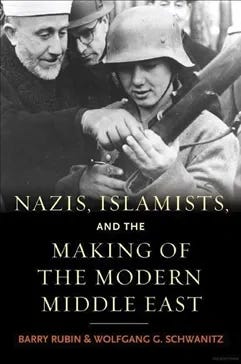
Ruhollah Khomeini was born in 1900, which means that he was a mature man of 39 at the outbreak of World War II, a religious scholar observing and participating in the spiritual and political matters of that time. One major thing going on at that time was that the German Nazis had forged a grand alliance with jihadism.
Adolf Hitler was passionately fond of jihadism, and said so on many occasions in the context of his inner circle, wishing that the Germans had been Muslims instead of Christians, as it would have made his entire Nazi project much easier.19 Khomeini wasn’t privy to those private conversations, but he couldn’t fail to notice that the German Nazis were eagerly allying with jihadi forces all over the Middle East and in Europe, as documented with much detail by the scholars Barry Rubin and Wolfgang Schwanitz in Nazis, Islamists, and the Making of the Modern Middle East (see image, above),20 and also by that indispensable historian, Edwin Black, in The Farhud.21
Hitler’s most intimate and important alliance was with the fellow featured in the Rubin & Schwanitz book cover above: Hajj Amin al Husseini, former Grand Mufti of Jerusalem and the founding father of the Arab Palestinian movement. Many believed the world-famous Husseini might become the next Islamic Caliph, and he gained tremendous notoriety as a leader of the German Nazi Final Solution in Europe. Husseini recruited and trained thousands of Bosnian and Kosovo Muslims for Heinrich Himler’s SS, and he co-directed the death-camp system with Adolf Eichmann (you read correctly).
If you read Spanish, I’ve got an entire book on Husseini and his alliance with the German Nazis; if not, I’ve got the following article in English:
This Nazi-jihadi alliance, forged in the prelude to, and during, WWII, was so profound and extended that Khomeini had to notice it.
Now, Khomeini couldn’t know about the absorption of all those jihadi-loving Nazis into the CIA, for that was done in secret. But the submerged iceberg had a visible and entirely public tip, noticeable to anyone paying close attention.
For example, in 1950, the American James Stewart Martin published All Honorable Men to denounce “the rebirth of German nationalism and Nazism … [and] the return to power [in Germany] of the industrialists who put the Nazis in.”22 He knew what he was talking about. Martin was head of the Decartelization Branch of the US Military Government in occupied Germany after WWII, and officially in charge of de-Nazifying Germany. But his job proved impossible, because his superiors—acting on orders from the top US bosses who were then absorbing the Nazi intelligence infrastructure into the CIA—sabotaged his every move and put the Nazis back in power everywhere in Germany. That’s what Martin denounced in his book.
Then, in 1956, the US bosses did something positively dramatic: they made the Nazi General Reinhard Gehlen, the creator of the Gehlen Organization that had recruited tens of thousands of Nazi war criminals for the CIA, the head of West Germany’s spy agency, the Bundesnachrichtendienst or BND.23 Wikipedia’s summary of that goes like this:
“On 1 April 1956, 11 years after World War II had ended, the U.S. Government and the CIA formally transferred the Gehlen Organization to the authority of what was by then the Federal Republic of Germany, under Chancellor Konrad Adenauer (1949–63). By way of that transfer of geopolitical sponsorship, the … Gehlen Organization became the nucleus of the Bundesnachrichtendienst (BND, Federal Intelligence Service).”
Khomeini may not have known the details about Gehlen’s recruitment of Nazis to the CIA, but the following two facts were entirely public:
that Reinhard Gehlen, Hitler’s top spy in the East, had been appointed to head the postwar BND in West Germany; and
that, since West Germany was an obvious US puppet state, Gehlen’s appointment was US policy.
It was indeed so public and obvious that the Nazis had been returned to power in West Germany, that German students during the 1960s began protesting this very development, culminating in protests at over a hundred West German universities in the tumultuous year of 1968 to demand the removal of the (quite numerous) former Nazis among West German government officials, installed there by the US bosses.24
This entire context was sufficient to pop the following thought into the head of Khomeini:
The US bosses are pro-Nazi psychopaths like me, and therefore pro jihad (and therefore pro slavery)!
There is one more experience I should mention, for it was no doubt especially instructive for Khomeini in this regard: the CIA activities to produce the 1953 coup against Mohammed Mossadegh involved all sorts of work to recruit for the coup the Shia Muslim clerics in Iran.25 One of the clerics whom the CIA worked to mobilize was Ayatollah Sayyed Abol-Ghasem Kashani (consult above footnote), and
“Kāšāni … is said to have facilitated Khomeini’s marriage, in either 1929 or 1930, to Ḵadija, the daughter of Ayatollah Moḥammad Ṯaqafi, a scholar resident in Tehran.”26
The same source points out that “according to another account, it was Moḥammad Lavāsāni who introduced Khomeini to the father of his future bride,” but this controversy does not matter here: the point is that Kashani (Kāšāni) and Khomeini were close.
As another example, consider Ayatollah Behbehani, also approached by the CIA in 1953, and the recipient of CIA money to organize against Mossadegh. He and Ayatollah Khomeini initially were not strong allies, but they did know each other and Behbehani would eventually support Khomeini’s 1979 coup. The point, once again, is that they knew each other.
And the larger point is that, since Khomeini knew the clerics approached by the CIA in 1953, and some of them intimately, Khomeini was obviously aware of the CIA’s fondness for Iranian jihadi clerics opposed to the abolition of slavery in Iran.
When you put all this together, it is hardly a shock that Khomeini should have reached out to the US bosses in 1963, right after he organized jihadi political violence against the Shah’s anti-slavery reforms. He’d seen enough to infer that, in addition to his anti-Soviet ideology, the US bosses would appreciate his pro-slavery jihadi antics.
Khomeini’s gamble paid off. The US bosses indeed became very excited when he reached out to them, and the CIA spooks right away developed a relationship with Khomeini. The recently declassified documents leave no doubt that, as The Guardian says, the CIA “had extensive contact with Ayatollah Khomeini before [the] Iran revolution.”27
Now that Khomeini had reached out, and that they had identified the Shah’s replacement, the next step for the US bosses was to con the Shah so they could get rid of him, install Khomeini in power, and launch the World Jihad.
That’s my Machiavellian hypothesis.
I cannot say precisely when the con to ruin the Shah was first set in motion, but I will commit to this: by 1970—just a few years after Khomeini contacted the CIA—that con was running already, as evidenced by some behaviors of the Shah that are downright bizarre except when the Shah is interpreted as the mark of that con, unwittingly setting himself up for destruction under the cynical tutelage of his presumed Western ‘friends.’
The Shah’s very strange behaviors
In February of 1973 the Shah Reza Pahlavi nationalized Iran’s oil industry.
This was… remarkable. The Shah owed his own autocratic power to the fact that Mossadegh had made precisely that mistake. So why was Reza Pahlavi copying that dangerous move from his deposed predecessor?
And one month later the Shah was at it again with the Soviets.
With Soviet premier Alexei Kosygin present and “listening attentively,” the Shah “address[ed] a huge crowd of steel mill workers at the dedication of a new mill built with Soviet help” (my emphasis), and he bragged to his audience that the consortium of Western companies—“British, American, French, and Dutch”—previously operating Iran’s oil industry had now been forced into submission.
“ ‘They have handed over to us total and real operation of the oil industry of Iran with the ownership of all installations,’ he said.”28
Contemporary observers interpreted, as historians have also done, that these histrionic geopolitical behaviors of the Shah, so unnecessarily loud and defiant, were meant as a particular form of communication with the US bosses: he was implicitly threatening them to get himself the Soviets for patron if they didn’t accept his oil nationalization and produced all sorts of additional support for him to modernize Iran. I believe, to the contrary, that this was all theater, with even the Soviets for dupes. But let us continue…
As all this was going on, in the same year of 1973, on 6 October, the Arab States, led by Egypt and Syria, attacked Israel, seeking to conclude—once again—a genocide of the Israeli Jews. It is called the Yom Kippur War because the Arab-Muslim enemies of Israel, ever gracious, attacked the Jews on their holiest day.
In the same month, OPEC (Organization of Petroleum Exporting Countries), led by Saudi Arabia, imposed an oil embargo on countries perceived to be supporting Israel, the United States first among them. And OPEC then decided to cut oil production by 5% per month to drive up prices for all importing countries, even the ‘neutral’ ones. This had the immediate effect of quadrupling oil prices globally. Soon,
“the anti-Israel initiative evolved into a generalized effort to raise global oil prices as much as possible, with the new objective of simply maximizing revenues.”29
The oil-price shock of the early 1970s.
The actual embargo lasted five months, but the economic effects persisted until 1975. Gasoline shortages in the US produced lines at the pump stretching up to five miles, forcing drivers during the peak of the crisis to wait several hours just to refuel their vehicles.
In the context of this oil shock, Reza Pahlavi, the Shah of Iran, just… seemed to lose it. Though Iran had not participated in the attack against Israel, the Shah joined the oil-shock policy. But he did more: Reza Pahlavi became the histrionic—even hysterical—media face of the oil shock and all the suffering it produced, prancing about and bragging about his own role in it.
Consider only what he said in a late-1973 interview to the New York Times:
“Of course the world price of oil is going to rise. ... Certainly! And how... ; You [Western nations] increased the price of wheat you sell us by 300%, and the same for sugar and cement ...; You buy our crude oil and sell it back to us, refined as petrochemicals, at a hundred times the price you’ve paid to us... ; It’s only fair that, from now on, you should pay more for oil. Let’s say ten times more.”30
These behaviors made the Shah a hated figure in the United States. Unlike Saudi leaders, who were more discreet, the Shah openly and loudly defended (as above) OPEC’s decision to raise oil prices. His rhetoric reinforced the perception that he was the driving force behind the economic pain Americans were feeling at the pump. The Shah’s defiant public statements thus made him an easy target for media voices that funneled the anger and frustration of Americans against him, portraying him as a traitor, since he was supposed to be such a close U.S. ally. Why are we supporting the Shah?, became the question among many public American commentators.

So here’s our question:
Why was the Shah behaving like this? Why was he so rabidly biting the hand that fed him—the very hand that, as with Mossadegh, could easily smack him down?
This is what I think: this was all theater. And the theater was a con. Reza Pahlavi was participating in this theater, unwittingly doing his part as the mark. In this way, he set himself up for destruction.
Explaining the con
It is a priori (before examining further evidence) unlikely that OPEC and the Shah would have pushed the oil shock without the explicit permission of the US bosses. I’ll tell you why.
The Shah had joined OPEC because the US bosses had practically forced him to do so. Whether this included assassinating Enrico Mattei, the Italian oil impresario with whom the Shah wanted to sign a completely different and independent deal, is a matter of speculation, but the Shah always believed that Mattei had been assassinated.31 So the Shah believed that striking it on his own with oil policy was exceedingly dangerous for him.
Saudi Arabia, for its part, functioned as a US protectorate. Her external security relied heavily, by then, on US military support, arms sales, and training (modest US military installations even existed, already, at this time, on Saudi soil). And Saudi Aramco, the Arabian-American Oil Company, Saudi’s entire source of revenue, was owned and operated by US oil companies, with Standard Oil of California (SoCal) and Standard Oil of New Jersey (Esso)—both Rockefeller-network companies—owning half. At the start of 1973—the year of the oil shock—the US oil companies that participated in Aramco owned fully 100% of Aramco, and by the end of that year they still owned 75%.32
Let me, then, state matters more strongly:
If we suppose that OPEC and the Shah did not have explicit permission from the US bosses for nationalizing Iran’s oil and launching the oil shock, then OPEC and the Shah would have to be interpreted, collectively, as imbeciles.
Now, whenever the important policy behaviors of people more powerful and better informed than you suggest to you that they must be imbeciles, your go-to method should be to suspect that you have a bad theory. You are probably missing key information or making some deeply mistaken assumptions (or both). If we remove the assumption that OPEC and the Shah didn’t have permission from the US bosses, they no longer look like imbeciles, so this is a promising move.
One question that I have not addressed, however, is this: Why exactly would the Rockefellers want an oil shock directed against the United States?
That’s the easy one. The Rockefellers, as we’ve documented (see here and here) have never been interested in the welfare of ordinary US citizens—to the contrary. And the oil shock was a gigantic profit windfall for them—for the Rockefellers.
Okay, but enough with the theoretical speculations. Let us now look at the evidence. Do we have actual evidence that OPEC and the Shah were following instruction from the US bosses, and in particular from the Rockefellers, to produce the oil-shock policy? We do.
David Gibbs over at the Institute for New Economic Thinking has done some interesting research on this. He writes:
“The energy crisis of the mid-1970s [the oil shock] has long been presented as a fortuitous event, a matter of bad luck from the U.S. standpoint. [According to this mainstream view,] officials in the [Richard] Nixon administration sought to cope with the crisis as well as they could [but] to the extent that the crisis was orchestrated, the orchestration emanated from the OPEC states themselves, not from the U.S. government. … [T]his benign interpretation of American policy amounts to a myth.”33 (my emphasis)
According to Gibbs’ documentation, the explicit “complicity,” as he names it, of the top US bosses with OPEC to produce the oil shock “is well established, based on multiple sources of information.” And he proceeds to list the items of evidence.
“In a 1970 meeting, for example, [US President Richard] Nixon stated to the Iranian Foreign Minister Ardeshir Zahedi, ‘Tell the Shah you can push [us] as much as you want [on oil prices],’ as Zahedi recalled in a later interview. Support for the shah’s oil policy formed a consistent theme throughout the Nixon presidency; this support extended into the presidency of Gerald Ford.”34
Notice that the year 1970 is before the Shah’s move to nationalize Iran’s oil. In other words, the US bosses were already instructing the Shah to raise oil prices even before he made the nationalization move. That suggests that the Shah was probably given the green light, privately, to nationalize Iran’s oil—this was part of the con. Because, if the US bosses were upset with the nationalization of Iran’s oil, they would have hardly supported the subsequent oil-shock policies of the Shah. It appears, then, that the US bosses were supporting the whole thing: nationalization of Iran’s oil, plus the oil-price shock.
The evidence supports, in fact, that the oil shock was US policy much more than it was Saudi policy. Indeed, the evidence suggests that the other oil producers, not understanding very well what was going on, were scared by the whole thing and were pressuring the Saudis and the Shah to lead OPEC back again to lower oil prices. But the US bosses didn’t allow the Saudis—their pets—to do that.
Gibbs continues:
“President Nixon effectively blocked efforts to lower prices, which had emanated from the government of Saudi Arabia in 1974. The Saudis offered to restrain OPEC price increases and communicated this to the Nixon administration—which rebuffed the offer. Writing in the Washington Post, Jack Anderson described the situation:
‘In secret messages to Washington, the Saudis offered to block the price rise, if the Nixon administration would bring pressure on the Shah to hold oil prices down. They [the Saudis] pleaded that they couldn’t stand alone against their fellow oil producers… . But Nixon and Kissinger did nothing.’
The lack of U.S. interest in this proposal evidently surprised the Saudi petroleum minister, Ahmed Zaki Yamani, who later wrote a delicately worded letter to Simon:
‘There are those amongst us [Saudi officials] who think that the U.S. administration does not really object to an increase in oil prices. There are even those who think that you encourage it.’
U.S. support for price increases was widely noted by informed observers both inside and outside the administration. A contemporary investigation published in Foreign Policy concluded, ‘The United States has encouraged Middle East oil-producing states to raise the price of oil and keep it up.’ The article was based on interviews with U.S. officials, including the former ambassador to Saudi Arabia, James Akins, and it was piquantly subtitled ‘We Pushed Them.’ ”35
What was the point of all that?
“… the U.S. corporate sector profited from the shah’s policies … Iranian arms purchases proved a special bonanza for Northrop, Grumman, and Bell Helicopter, which gained lucrative sales contracts; these benefits were made possible by the energy crisis, which fueled Iranian imports. The major oil companies also benefited from the energy crisis, which elevated their profits. And from Tehran in 1974, U.S. Ambassador Richard Helms noted with pleasure,
‘The number of American businessmen not to mention those of other nations keeps the hotels full to overflowing and keeps this [US] Embassy [in Iran] hopping to help as best we can… . U.S. business is getting more than its share of the action here, I am glad to say.’
The partnership was further bolstered by corporate social networks, including the influential Rockefeller family, who had long been friendly with the Pahlavis.”36 (my emphasis)
It seems, from context, that the “friendly” Rockefellers took the Shah Reza Pahlavi aside and said to him some words (echoed later by their retainers in the US government, and chief among them US President Richard Nixon). I imagine it was some version of this:
“Look here, dear Reza, let us do some mutually profitable business. You go ahead and nationalize Iran’s oil, and then let’s have a huge oil-price hike. You’ll make a killing in the oil market! Billions! And with that you can modernize Iran. We US bosses will also make a lot of money. Yes, US citizens will hurt, but it’s Iran’s turn to get rich. You can even say that in public when people criticize you for the oil prices. Why not? Just make sure that you spend those oil profits on our companies, and we will build your infrastructure. Together, we will modernize Iran!”
The Shah, like a good mark, was seduced to do something dishonest in exchange for a huge profit and the promise of a historical legacy as the modernizer of Iran, helped along by the rationalization that, if he was inflicting suffering on ordinary Americans, they were already rich enough, and he was bringing ‘economic justice’ to the Iranian poor.
It is always thus, by the way. As explained by professional con artists to David Maurer, their accomplished ethnographer, this is a hard principle of the con:
Only a fundamentally honest person, an incorruptible person, can be immune to the con artist, for the con artist needs the mark to agree to do something dishonest.37
For the Rockefellers and their allies in the military-intelligence-industrial-intelligence complex, the theater behind the oil shock was a tremendous success. They made a killing in the oil market and they made a killing selling weapons and infrastructure to the Shah.
Yes, the bosses always make money—but don’t get too distracted by that. The most important goals of the bosses, in my view, are always political. Wealth is the instrument of power; power itself is the ultimate goal. In MOR’s Machiavellian hypothesis, the weapons and infrastructure that US bosses built for the Shah were meant as future resources for Khomeini, who, with the help of the US bosses, would soon take over in Iran. It was all to launch World Jihad, a tool to destroy democracy everywhere.
In the short term, the political angle was to ruin the Shah’s prestige via his oil-shock protagonism, because they needed to do this first, to ruin him, in order to remove him.
But why was the Shah so naïve?
Why wasn’t Reza Pahlavi more worried about the dangers to himself from participating in this US-boss theater to produce an oil shock that everyone would blame him, Reza Pahlavi, for? A couple of reasons, I believe.
First, the tumultuous year of 1973 had begun with US President Richard Nixon signing the Paris Peace Accords, which led to the withdrawal of US troops from Vietnam in the middle of widespread and even violent anti-war protests in the United States and elsewhere in the West. The Shah had watched all this in amazement from Tehran. It seemed (and perhaps it was even true) that the US government had capitulated to popular feeling.
These developments were an expression of a massive change in the political grammar of the West. During the late 1960s and early 1970s, civil-rights, anti-apartheid, and anti-Vietnam-War activists had fueled the growth of anti-colonial and anti-imperial sentiment among Western citizens, who came to sympathize with a growing emotion, across the Third World (a.k.a. the Global South), favoring greater independence and resource nationalism.
So how did Reza Pahlavi perceive all this? He may have thought that political support for an imperialist move against someone such as himself—whom the US bosses had presented as a pro-Western ally—had become culturally too difficult. For this seemed now impossible even against the Vietnamese communist ‘enemy.’
A wise advisor might have (politely) retorted to the Shah: Yes, but, Your Majesty, your entire military, and also SAVAK, your secret police, have a ‘Made in the USA’ stamp printed all over them. Can you really trust these institutions? What if a future US president decides to use these institutions covertly to engineer a coup? They wouldn’t need political support at home. They could make it look like it was an internal thing—nothing to do with them. Aren’t you exquisitely vulnerable?

Why wasn’t Reza Pahlavi worried enough about this? The only plausible explanation that I can see is the following: because overseeing the entire Iranian system was General Hossein Fardoust.
Fardoust was first the head of SAVAK’s Special Intelligence Bureau: “SAVAK within SAVAK,” they called it. In other words, Fardoust was the boss of the Iranian spooks and cops who spied on, threatened, and blackmailed the other Iranian spooks and cops. Because, “according to a blueprint provided by the United States,” the creator of SAVAK, “SAVAK was meant to undertake functions performed by both the CIA and the FBI in the United States.”38
And then Fardoust was made chief of the Imperial Inspectorate, which had a similar role to “SAVAK within SAVAK,” but applied now to the entire government—including SAVAK—for it acted in a supervisory role to every single institution to ensure loyalty, identify corruption, and report directly to the Shah.
Every bureaucrat in Iran feared Hossein Fardoust.
Since Fardoust had been a childhood companion of the Shah, and had attended the same elite military academy in Switzerland, they had formed a bond that lasted into adulthood. He was one of Reza Pahlavi’s closest and most trusted friends. With his dear Fardoust in charge, Reza Pahlavi must have felt confident that he was running his own country.
Alas…! The Shah, like Julius Caesar, would have his “Et tu, Brute?” moment, for Fardoust would later betray him. But I get ahead of myself.
Anyway, I believe the above reasons made the Shah feel secure that the “friendly” Rockefellers and the other US bosses were inviting him into a mutually profitable adventure, rather than setting him up for destruction, and so he was seduced to become the global face of the oil shock.
Everything was now ready for the second phase of the con, where Jimmy Carter would play the leading role.
The second phase of the con begins
I believe Reza Pahlavi had correctly diagnosed the trend of the late 1960s and early 1970s, when Western citizenries became anti-colonialist and anti-imperialist, unwilling to support economically motivated or politically motivated regime-change interventions. There was indeed a new political grammar in the West.
However, there is a simple truth that Pahlavi did not understand, and would not understand until shortly before his death, and then only partially, when he penned his bitter memoirs.39 And that simple truth is this: even a Western citizenry disgusted by imperialism and focused on defending human rights can absolutely—no problem—be mobilized to support regime-change abroad. You just need to represent the nuisance foreign ruler convincingly as a monster.
But any such accusation, to be effective, should not come officially from a Western government (or Western citizens would smell a rat); it should come, rather, from a group whose very category name screams that we are not the government: a ‘non-governmental organization’ or NGO. (This linguistically awkward but brilliantly Orwellian naming convention came into sudden widespread currency, to replace the more sensible ‘private organization,’ right around the year 1970.)40 The new strategy for regime-change abroad was thus: under pressure from an outraged citizenry—mobilized by these NGOs—the government should find itself dragged to act in defense of human rights. See how that works?
Or at least that is MOR’s Machiavellian model of how US Intelligence operates.
This model produces a very specific suspicion of the human-rights group Amnesty International, because, right after the US bosses instigated the oil-shock business of 1973-75 that destroyed the Shah’s prestige in the West, Amnesty published a report, in November of 1976, alleging that SAVAK, the Shah’s security service, had been engaging in pervasive use of torture and political imprisonment. Relevant to my suspicion is the fact that Peter Benenson, Amnesty’s founder, had already resigned in disgust after claiming that his group had been thoroughly infiltrated by the CIA and MI6.41
Most people didn’t take Benenson’s claims seriously because the media did an amazing thing: it defended the purity and integrity of Amnesty International instead of investigating Benenson’s claims, and they cast doubt on Benenson’s credibility by portraying him as an erratic ‘paranoid’ who didn’t get along well with others and with whom nobody in Amnesty agreed. No serious media investigation followed of Benenson’s allegations of intelligence infiltration in Amnesty International.
And yet, in context, Benenson’s accusations were hardly outlandish. Just a few years before, in 1967, Ramparts magazine had started a trend of scandal with its investigation of the National Student Association, the largest in the country, which it exposed as a CIA front. A whole slew of investigations (including congressional investigations) had followed, and continued until 1977, that revealed the CIA to have corrupted all manner of ‘non-governmental organizations’—including the mainstream media—across the entire spectrum of democratic civil activity in the United States and elsewhere. The same pattern would be documented a decade later in the Iran-Contra congressional investigations (nothing changed).
If you’ve been paying attention to the recent news, none of this will surprise you, because we’ve been learning that US Intelligence was using USAID (United States Agency for International Development), with zero transparency, to funnel giant sums of money to all manner of ‘non-governmental organizations’ (NGOs), achieving in this manner the clandestine goals of the US bosses without the appearance of US-government involvement. This has included sending very large sums to Hamas after the Hamas massacre and hostage-taking of 7 October 2023, which was disguised as money for charitable NGOs.42 In this manner, it appears as if this is all ‘non-governmental’ activity.
Anyway, this is the context into which Jimmy Carter became president. Because it was just two months after Amnesty International began its media campaign against the Shah that Jimmy Carter assumed office on the strength of a presidential campaign—premised on the projection of Carter’s ‘regular guy’ and ‘good guy’ image—that promised to bring ethical leadership to domestic and foreign policy.
At first, Jimmy Carter allowed others to bash the Shah. But by mid-to-late 1978 (August–October), he joined the chorus accusing the Shah’s regime of engaging in human-rights abuses, and publicly called for reform. The future was clear: the end of the Shah’s usefulness had come, as anyone capable of reading geopolitical fortunes in such communications instantly knew.
Reza Pahlavi was not one of those. He was slow, at first, to get the hint. So Carter was forced to clear his throat and speak more clearly. As 1978 raced to the finish, with Khomeini’s insurrectionists intensifying their guerrilla warfare against the Shah, the US president hardened his tone and began blaming Iran’s political instability explicitly on the Shah’s alleged repression. Then, most unlike the benevolent country bumpkin he was supposed to be, and more like a totalitarian Roman Emperor giving the thumbs down at a gladiatorial event, on 7 December Carter declared that Iranians should decide the Shah’s fate.
But still the Shah didn’t get it!
So Carter, much indisposed, bestirred himself to send direct word to the monarch, in early January, that he should exit his own country—and toute de suite. On the 16th, Reza Pahlavi finally obeyed the One True Shahanshah, King of Kings, the powerful Jimmy Carter, and left Iran.
A few weeks later, Ayatollah Ruhollah Khomeini assumed supreme and total power. And World Jihad was launched.
But how exactly did Carter (and his bosses) manage this?
Up next, in Part 7 (coming soon).
John H. Stutesman, Consular/Political Officer in Tehran (1946-1949), and Officer in Charge, Iranian Affairs, Washington, DC (1949-1952). From his interview statements in: Association for Diplomatic Studies and Training. (n.d.). Iran Country Reader. Foreign Affairs Oral History Collection. Retrieved from https://adst.org/oral-history/country-reader-series/
The international consortium that replaced the AIOC after the coup was known as the Iranian Oil Participants Ltd. (IOP), was composed of the following companies:
The founding members of IOP included British Petroleum (40%), Gulf Oil (8%), Royal Dutch Shell (14%), and Compagnie Française des Pétroles (now TotalEnergies SE, 6%). The four Aramco partners — Standard Oil of California (SoCal, later Chevron), Standard Oil of New Jersey (later Exxon), Standard Oil Co. of New York (later Mobil), and Texaco – each held an 8% stake in the holding company.
British Petroleum (BP) – formerly AIOC, received 40% of the shares.
Royal Dutch Shell – received 14%.
Compagnie Française des Pétroles (CFP, later Total) – received 6%.
The four Aramco (Arabian-American Oil Company) partners received:
Standard Oil of New Jersey (Exxon) – 8%.
Standard Oil of California (Chevron) – 8%.
Gulf Oil – 8%.
Texaco – 8%.
The two Standard Oil companies are in the Rockefeller network.
Shah Mohammed Reza Pahlavi of Iran often drew parallels between his rule and the ancient Achaemenid Empire, particularly emphasizing connections to figures like Cyrus the Great and Darius the Great. This was part of his broader effort to evoke Iran’s imperial past as a source of national pride and legitimacy.
One prominent example was the lavish 2,500-year celebration of the Persian Empire in 1971, held at Persepolis. The Shah used the event to position himself as the modern successor to the Achaemenid emperors, showcasing Iran as a historically significant and culturally rich nation. The celebration included grand ceremonies, foreign dignitaries, and speeches extolling the ancient empire’s achievements.
This association with the Achaemenid rulers was also reflected in his adoption of the title ‘King of Kings’ (Shahanshah), further linking his reign to Iran’s imperial legacy. However, this focus on grandeur and historical parallels was criticized by some for being out of touch with the socio-economic realities of the country at the time.
To learn more about the ancient Western-Asian ethical movements that produced the humanitarian aspirations of the ancient Achaemenid Persian Empire, I invite you to read the following MOR series:
Association for Diplomatic Studies and Training. (n.d.). Iran Country Reader. Foreign Affairs Oral History Collection. Retrieved from https://adst.org/oral-history/country-reader-series/
Association for Diplomatic Studies and Training. (n.d.). Iran Country Reader. Foreign Affairs Oral History Collection. Retrieved from https://adst.org/oral-history/country-reader-series/
Archie M. Bolster, a political officer of the State Department in Iran from 1961 to 1966, and later with the intelligence branch of the State Department (Bureau of Intelligence and Research – INR. When interviewed about conditions prior to the land reforms, he said: “People were owned almost like serfs. They were attached to their village and the village was owned by the landlord. Typically they had a five part division of the harvest. The person who provided the land got one-fifth; the laborer got one-fifth; the water, the seed, the draft animals, etc. So that in most cases the landlord got four-fifths of what was produced. The farmer just got the fifth representing his labor because he couldn't provide draft animals, water, seed. All of these things were provided by the landlord.”
Robert l. Funseth, US Vice Consul in Tehran and then a consular officer in Tabriz was in Iran in the period 1954-1956. When interviewed about what was happening in Iran back then, he said: “The Shah had followed his father’s practice of liberalization of women. They didn’t have to wear the veil anymore, although many did. Iran was then in a transition. There was land distribution going on. I’ll always remember when I first came to Tehran, the former colonial British Club had been taken over by the Iranians, and it was called the Tehran Club. I remember the first or second week I was in Tehran, someone introduced me to an Iranian who said, “Oh yes, his family owned 100 villages in Azerbaijan.” That was a concept I hadn’t realized, that you still had a feudal society. If not legally owned. They "owned" the land. But these people were almost indentured. They lived as sharecroppers. As I recall, there were four divisions of the crop: Twenty-five percent for the land, twenty-five percent for the water, I think; twenty-five percent for tools and twenty-five percent for labor. So most of these people would stay in the same village for generations. Centuries perhaps. But they got a limited amount. With modernization and land distribution, we supported that effort to get people their own land and to get them productive and self-sufficient.”
Ganji, M. (2002) Defying the Iranian Revolution. Praeger (pp.xvii-xix)
Milani, A. (2011). The Shah. New York, NY: Palgrave Macmillan. (pp.223-224)
Milani, A. (2011). The Shah. New York, NY: Palgrave Macmillan. (ch.13)
Milani, A. (2011). The Shah. New York, NY: Palgrave Macmillan. (pp.226)
Manoucher Ganji writes:
“The principal reason for the opposition of Khomeini and other highly placed clerics to the reform program stemmed from (1) their support for the big landowning class and big Bazari proprietors who constituted their major contributors, (2) the fact that those reforms applied also to villages under the control of the clerics, and (3) the fact that it granted women the right to vote.
In regard to the clerical opposition to the Shah’s reforms, a U.S. scholar, Barry Rubin, states that ‘to admit that provocations for their fiercest fight was the breakup of estates and a threatened erosion of landlord power hardly augments the Iranian clergy’s populist credentials.’ ”
SOURCE: Ganji, M. (2002) Defying the Iranian Revolution. Praeger (p.xix)
“Khomeini and his followers were not going to miss the chance to put the Shi’i [Shia] zeal for tragedy and martyrdom to positive use. The death of Hossein, which had taken place in the wake of his rebellion against usurpers and tyrants, was something to be emulated. Khomeini issued a statement asking the preachers to ‘ignore the police directive and continue to discuss tyranny and threats against Islam.’ They should, he said ‘mention the danger of Israel and its agents’ and compare the situation to that of the Umayyads when Hossein challenged the caliph and was slaughtered for it. He also told the cautious clergy: ‘Silence in these days means support for the tyrannical regime and the enemies of Islam.’ ”
SOURCE: Moin, Baqer (2000). Khomeini, Life of an Ayatollah. New York City: St. Martin's Press. p.101
Moin, Baqer (2000). Khomeini, Life of an Ayatollah. New York City: St. Martin's Press. pp.102-106.
Moin, Baqer (2000). Khomeini, Life of an Ayatollah. New York City: St. Martin's Press. pp.102-106.
Islam and Revolution I, Writings and Declarations of Imam Khomeini, translated and annotated by Hamid Algar, 1981, p.17
https://archive.org/details/islamrevolutionw00khom/page/17/mode/2up
Moin, Baqer (2000). Khomeini, Life of an Ayatollah. New York City: St. Martin's Press. pp. 111–113.
‘Two Weeks in January: America's secret engagement with Khomeini’; BBC; 3 June 2016; By Kambiz Fattahi, BBC Persian Service.
https://www.bbc.com/news/world-us-canada-36431160
‘Islam in Iran: A Research Paper’; National Foreign Assessment Center (NFAC); CIA; 1979. (Author: classified)
https://news.files.bbci.co.uk/ws/documents/persian/bbc_persian_islam_in_iran.pdf
I share an excerpt from another MOR piece where I discuss this very issue:
… Adolf Hitler himself was besotted with the Arab religion, Islam.
Albert Speer, Hitler’s minister of armaments, wrote about that after the war in his contrite memoir, penned in prison. Hitler, Speer said, loved Islam because it was “a religion that believed in spreading the faith by the sword and subjugating all nations to that faith.” Had the Muslims conquered Europe in the Middle Ages, instead of “[getting] driven back at the Battle of Tours [Poitiers],” Hitler believed, then “Islamized Germans could have stood at the head of the Mohammedan Empire.”
That’s interesting. It means that the German-supremacist Adolf Hitler would have liked the Muslim Arabs to militarily defeat the Medieval Germans! And just so that the Germans could inherit Islam! This betrays a rather pronounced love of the Mohammedan religion.
And he would harp on this theme often.
“Hitler usually concluded this historical speculation by remarking: ‘You see, it’s been our misfortune to have the wrong religion. … The Mohammedan religion … would have been much more compatible to us than Christianity.’ ”
Consistent with all that, before and during WWII, Adolf Hitler and the Nazis happily forged important alliances with leaders all over the Muslim Arab world and in Europe, and these Muslim leaders and their movements reciprocated Hitler’s love of Islam with open admiration for the German Nazis.
You may read the entire article (and see the documentation for my claims) here:
Rubin, Barry, and Wolfgang G. Schwanitz. Nazis, Islamists, and the Making of the Modern Middle East. Yale University Press, 2014.
Black, E. (2010). The Farhud: Roots of the Arab-Nazi alliance in the Holocaust. Dialog Press.
Martin, J. S. (1950). All honorable men: A personal account of the U.S. war on Nazi big business. Random House. (p.vii)
The following is explained in a National Archives document:
“the West German intelligence organization established by General Reinhard Gehlen... was initially under the control of the U. S. Army and was taken over in 1949 by the CIA. Later Gehlen’s organization became the Bundesnachrichtendienst (BND), West Germany's foreign intelligence agency.” (a)
This is not a secret and there is zero controversy about it (though it is true that the public largely does not know it). If you consult Wikipedia’s article on the Gehlen Org, it says this:
“The Gehlen Organization or Gehlen Org (often referred to as The Org) was an intelligence agency established in June 1946 by U.S. occupation authorities in the United States zone of post-war occupied Germany, and consisted of former members of the 12th Department of the German Army General Staff (Foreign Armies East, or FHO). It was headed by Reinhard Gehlen who had previously been a Wehrmacht Major General and head of the Nazi German military intelligence in the Eastern Front during World War II.
The agency was a precursor to the Bundesnachrichtendienst (BND or Federal Intelligence Service) which was formed in 1956.” (b)
If you consult Wikipedia’s article on Reinhard Gehlen it says this:
“Beginning with his time as head of the Gehlen Organization, Gehlen favored both Atlanticism and close cooperation between what would become West Germany, the U.S. intelligence community, and the other members of the NATO military alliance. The organization employed hundreds of former members of the Nazi Party and former Wehrmacht military intelligence officers.
After West Germany regained its sovereignty, Gehlen became the founding president of the Federal Intelligence Service (Bundesnachrichtendienst, BND) of West Germany (1956–68). Gehlen obeyed a direct order from West German Chancellor Konrad Adenauer, and also hired former counterintelligence officers of the Schutzstaffel (SS) and the Sicherheitsdienst (SD), in response to an alleged avalanche of covert ideological subversion hitting West Germany from the intelligence services behind the Iron Curtain.”(c)
SOURCES IN THIS FOOTNOTE:
(a) ‘Records of the Central Intelligence Agency (RG 263)’; Interagency Working Group (IWG); The National Archives; By Dr. Richard Breitman, Professor of History, American University, IWG Director of Historical Research.
https://www.archives.gov/iwg/declassified-records/rg-263-cia-records/rg-263-report.html
‘1968 in Germany’; April 2018; SiencesPo Bibliothèque; by Peter Birke.
https://dossiers-bibliotheque.sciencespo.fr/voir-plus-loin-que-mai-les-mouvements-etudiants-dans-le-monde-en-1968/1968-germany
My source for this is:
Gasiorowski, M. J. (2013). The CIA’s TPBEDAMN Operation and the 1953 Coup in Iran. Journal of Cold War Studies, 15(4), 4-24.
I summary the CIA’s efforts to mobilize clerical opponents of Mossadegh in the 1953 coup, with page references to the Gasiorowski paper.
Funding and Support for Clerics
The CIA provided financial support to Sheikh Mohammad Taqi Falsafi, a cleric known for his anti-Tudeh Party and anti-Soviet rhetoric. Since the CIA was trying to paint Mossadegh as an ally of the communist Tudeh Party, this support was partly aimed at undermining clerical and popular support for Mossadegh and his National Front (p. 13-14).
The CIA’s psychological warfare operation (TPBEDAMN) also sought to create tension between Ayatollah Abolghasem Kashani and Mossadegh by publishing propaganda that attacked Kashani, including crude materials like a cartoon implying Mossadegh was sexually molesting him (p. 13-14).
Encouraging Clerical Opposition to Mossadegh
The CIA station in Tehran was instructed to approach clerical leaders and bazaar merchants to enlist their support against Mossadegh, potentially using the CIA’s TPBEDAMN network, which had contacts in these circles (p. 16).
A specific aspect of the coup plan involved staging attacks against religious leaders to create the impression that Mossadegh was unable to maintain order. These attacks, likely carried out via the TPBEDAMN network, included threats against clerics, sham bombings, and the distribution of fabricated documents suggesting a secret agreement between Mossadegh and the Tudeh to target religious figures (p. 16-17).
Attempts to Secure a Religious Decree Against Communism
On August 17, 1953, as the coup was faltering, the CIA team attempted to persuade certain clerics to pressure Ayatollah Mohammad Hossein Borujerdi, Iran’s leading Shi’a authority, to issue a religious decree denouncing Communism. The decree was intended to turn public opinion against Mossadegh, but Borujerdi ultimately did not issue it in time for it to impact the coup (p. 19).
Clerical Involvement in the Final Coup Effort
On August 19, the day of the successful coup, the CIA reportedly paid Ayatollah Behbehani to organize anti-Mossadegh crowds. Some sources also indicate that money was given to an intermediary linked to the Rashidian brothers to be passed to Ayatollah Kashani for the same purpose, though it is unclear if Kashani received it (p. 19).
The CIA’s psychological warfare efforts were central to mobilizing clerical opposition to Mossadegh, both through direct funding of anti-Mossadegh clerics and by spreading propaganda that increased clerical hostility toward him. Let me know if you need further clarification or additional details.
Rahnema, A. (2012). KĀŠĀNI, SAYYED ABU'L-QĀSEM. In Encyclopaedia Iranica.
https://referenceworks.brill.com/entries/encyclopaedia-iranica-online/kasani-sayyed-abul-qasem-COM_12401
‘US had extensive contact with Ayatollah Khomeini before Iran revolution’; The Guardian; 10 June 2016; by Saeed Kamali Dehghan in London and David Smith in Washington.
https://www.theguardian.com/world/2016/jun/10/ayatollah-khomeini-jimmy-carter-administration-iran-revolution
‘Iran's Shah Reports ‘Full’ Oil Control’; The New York Times; 17 March 1973; by Associated Press.
https://www.nytimes.com/1973/03/17/archives/irans-shah-reports-full-oil-control-full-oil-control-reported-in.html
‘Oil and the Energy Crisis of the 1970s: A Reanalysis’; Institute for New Economic Thinking; 25 June 2024; by David Gibbs.
https://www.ineteconomics.org/perspectives/blog/oil-and-the-energy-crisis-of-the-1970s-a-reanalysis
‘Price Quadruples for Iranian Crude Oil at Auction’; New York Times; December 12, 1973; by William. D. Smith.
The following is excerpted from: Milani, A. (2011). The Shah. New York, NY: Palgrave Macmillan. (pp.235-236)
“September 1960 was also the time when some of the oil-producing countries in the world—Iran, Iraq, Kuwait, Saudi Arabia, and Venezuela—decided to form a cartel and called it the Organization of Petroleum Exporting Countries, known since then by its acronym of OPEC. After the trauma of trying to sign a separate deal with Enrico Mattei, the Italian maverick oilman, joining the new organiza¬ tion was for the Shah both a relief and a challenge. The Shah believed Mattei’s death in a plane crash, said to be an accident caused by “lack of visibility,” wasin fact the result of a conspiracy. “I have never believed that Mattei’s death was an accident,” the Shah said. He went on to add that in his view, Mattei “was amongst the first casualties” of the Shah’s attempt to steer an independent course in oil negotiations. The United States and Britain both tried to dissuade the Shah from signing the controversial deal with Mattei, as it would have given Iran 75 percent of the profits. Both countries moved gingerly to muscle Mattei out and, until his death, their effort failed. Maybe that explains the Shah’s initial reluctance to make a serious commitment to OPEC.
But gradually he changed his mind. He appointed Fuad Rouhani as Iran’s representative to the new organization. Rouhani was one of Iran’s most respected oil economists and jurists, known for his intimate knowledge of the complicated calculus of oil pricing and of the arcane world of oil contracts and agreements. Rouhani was selected as the first secretary-general of OPEC.”
‘Oil and the Energy Crisis of the 1970s: A Reanalysis’; Institute for New Economic Thinking; 25 June 2024; by David Gibbs.
https://www.ineteconomics.org/perspectives/blog/oil-and-the-energy-crisis-of-the-1970s-a-reanalysis
The footnotes for all this are in Gibbs’s book: Gibbs, D. N. (2024). Revolt of the Rich: How the Politics of the 1970s Widened America's Class Divide. Columbia University Press.
‘Oil and the Energy Crisis of the 1970s: A Reanalysis’; Institute for New Economic Thinking; 25 June 2024; by David Gibbs.
https://www.ineteconomics.org/perspectives/blog/oil-and-the-energy-crisis-of-the-1970s-a-reanalysis
The footnotes for all this are in Gibbs’s book: Gibbs, D. N. (2024). Revolt of the Rich: How the Politics of the 1970s Widened America's Class Divide. Columbia University Press.
‘Oil and the Energy Crisis of the 1970s: A Reanalysis’; Institute for New Economic Thinking; 25 June 2024; by David Gibbs.
https://www.ineteconomics.org/perspectives/blog/oil-and-the-energy-crisis-of-the-1970s-a-reanalysis
The footnotes for all this are in Gibbs’s book: Gibbs, D. N. (2024). Revolt of the Rich: How the Politics of the 1970s Widened America's Class Divide. Columbia University Press.
‘Oil and the Energy Crisis of the 1970s: A Reanalysis’; Institute for New Economic Thinking; 25 June 2024; by David Gibbs.
https://www.ineteconomics.org/perspectives/blog/oil-and-the-energy-crisis-of-the-1970s-a-reanalysis
The footnotes for all this are in Gibbs’s book: Gibbs, D. N. (2024). Revolt of the Rich: How the Politics of the 1970s Widened America's Class Divide. Columbia University Press.
Maurer, D. W. (1999). The Big Con: The Story of the Confidence Man. Anchor Books. (Original work published 1940)
Milani, A. (2011). The Shah. New York, NY: Palgrave Macmillan. (p.3)
“ ‘[F]rom the moment that Iran became the master of its own underground wealth, a systematic campaign of denigration was begun concerning my government and my person.... It was at this time that I became a despot, an oppressor, a tyrant. Suddenly malicious propaganda became apparent; professional agitators operating under the guise of ‘student’ organizations appeared. This campaign begun in 1958 reached a peak in 1961. Our White Revolution halted it temporarily. But it was begun anew with greater vigor in 1975 and increased until my departure.’ ”
quoted in: Milani, A. (2011). The Shah. New York, NY: Palgrave Macmillan. (p.236
I asked chatGPT the following question:
“If you had to choose just one year as the point of inflection, the year when a dramatic increase in the use of the phrase ‘non-governmental organization’ happened, setting a cultural/linguistic trend for the future, what year would that be?”
and GPT answered:
“While the term ‘non-governmental organization’ (NGO) was introduced in 1945 with the United Nations Charter, its widespread usage in media and public discourse saw a significant increase during the 1970s. This surge coincided with a notable expansion in the number and influence of NGOs globally. From 1970 to 1985, total development aid disbursed by international NGOs increased tenfold, highlighting their growing prominence in international development. If one had to pinpoint a single year marking a dramatic rise in the use of the term ‘non-governmental organization,’ 1970 stands out as a pivotal moment when NGOs began to gain substantial recognition and influence.
Peter Benenson founded Amnesty International in 1961 after two students were imprisoned by the Portuguese dictatorship merely for raising a toast to freedom. The point of Amnesty was to advocate for the release of prisoners of conscience, to fight against human rights abuses, and to promote international standards of justice. But just five years later, Benenson was already convinced that his organization had been thoroughly infiltrated by US and British Intelligence. Here is Wikipedia’s summary of this (I improved the punctuation):
“In 1966, Benenson suspected that the British government, in collusion with some Amnesty employees, had suppressed a report on British atrocities in Aden. He began to suspect that many of his colleagues were part of a British intelligence conspiracy to subvert Amnesty, but he could not convince anybody else at AI [Amnesty International]. Later in the same year, there were further allegations when the US government reported that Seán MacBride—the former Irish foreign minister and Amnesty’s first chairman—had been involved with a Central Intelligence Agency [CIA] funding operation. MacBride denied knowledge of the funding, but Benenson became convinced that MacBride was a member of a CIA network. Benenson resigned as Amnesty’s president on the grounds that it was bugged and infiltrated by the secret services, and said that he could no longer live in a country where such activities were tolerated.”
Here’s one dramatic example:
“In 2024, as the [Middle East] region reeled from the aftermath of the bestial atrocities committed by Hamas in Israel the previous year [October 7 massacre and hostage-taking], the United States significantly boosted its financial support for projects in Gaza and the West Bank, spending more than $200 million of American taxpayers’ money in territories already rife with terrorist incitement and activity.”
Those $200 million GOVERNMENT dollars went to so-called ‘non-governmental organizations’ (NGOs). And of course, nothing happens in Gaza or Judea & Samaria (‘West Bank’) that is not allowed by Hamas or PLO/Fatah (‘Palestinian Authority’), both terrorist groups. So, effectively, the money to all those ‘non-governmental organizations’ is money sent to the terrorists.
Is this a deliberate attack on Israel? It certainly seems that way, because USAID did the utmost to hide what it was doing:
“The respected Israeli research organization NGO Monitor pointed out that as the US government ‘dramatically increased funding’ for these various projects, it ‘drastically decreased transparency.’
These grants were made to what USAID called ‘miscellaneous foreign awardees.’ You wouldn’t know from the opaque accounting process that beneficiaries included local partners who praised [Hamas’] October 7 onslaught [which murdered 1,200 Israeli civilians and took another 250 hostage].”
SOURCE: ‘USAID was rotten, but Trump needs the ‘soft power’ of foreign aid done right’; New York Post; 4 February 2025; by Mark Dubowitz and Ben Cohen
https://nypost.com/2025/02/04/opinion/usaid-was-rotten-but-trump-needs-the-soft-power-of-foreign-aid-done-right/


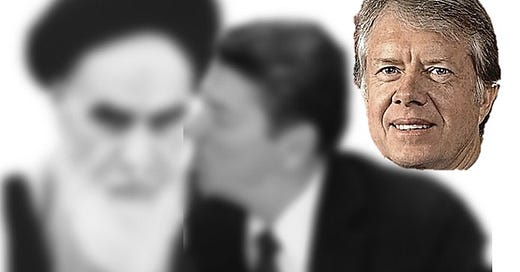


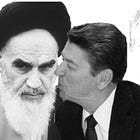
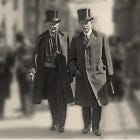
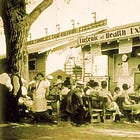



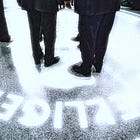
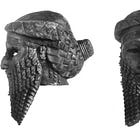


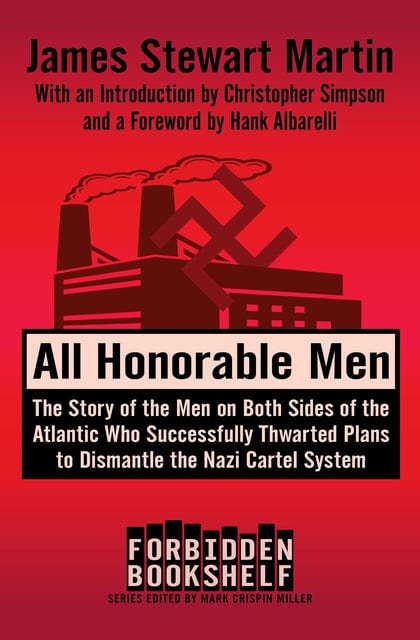
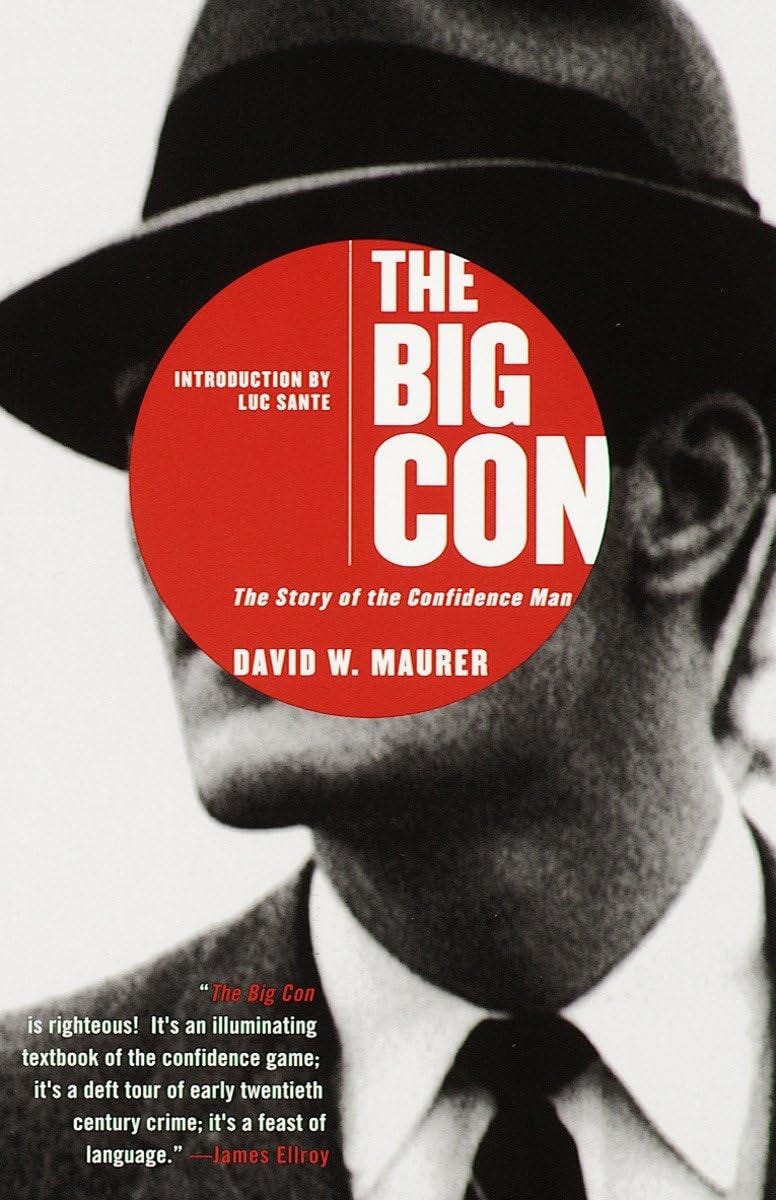

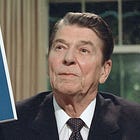
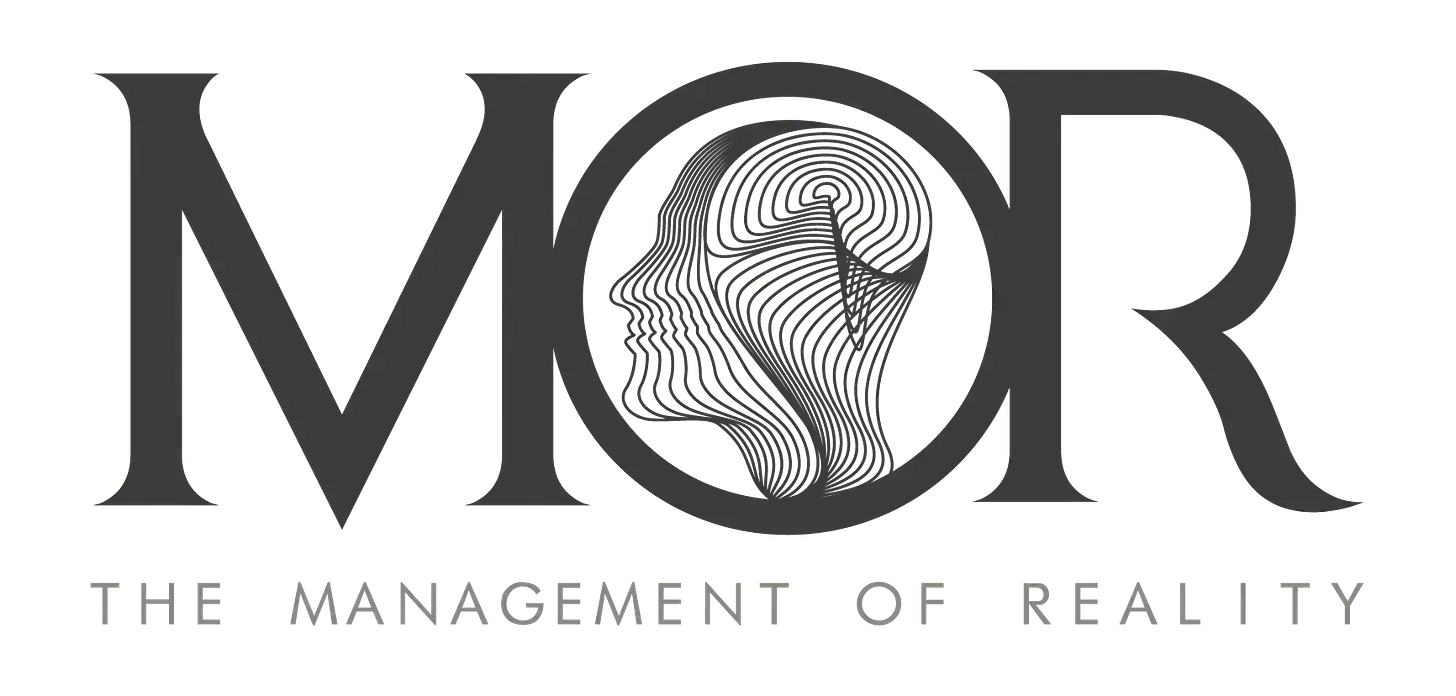
![Semitism Ascendant: The story of ancient Mesopotamia [SEMITISM vs. ANTISEMITISM Part 2]](https://substackcdn.com/image/fetch/$s_!X0TW!,w_140,h_140,c_fill,f_auto,q_auto:good,fl_progressive:steep,g_auto/https%3A%2F%2Fsubstack-post-media.s3.amazonaws.com%2Fpublic%2Fimages%2Feeb9fd85-d8de-4982-8ab6-cf5c371df215_1026x327.webp)
Engagingly written. Well documented. Thank you for unraveling this ball of snakes
I'd be curious to get your take on this pro-wrestling style meeting Trump just had with Zelensky. How odd that it was carried out with such theatrics on tv, not behind closed doors. I'm an anti-Banderite, so I have no great fondness for the pentagon's Ukraine regime.